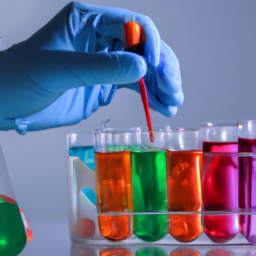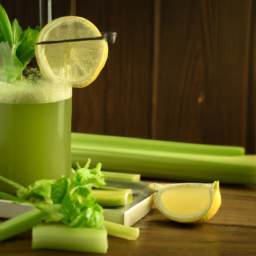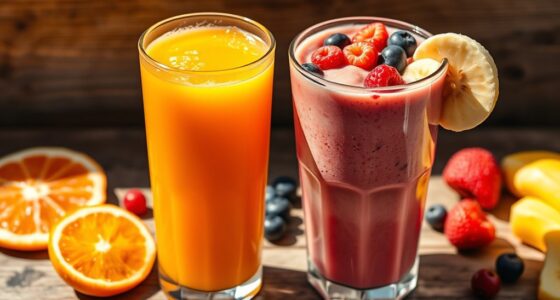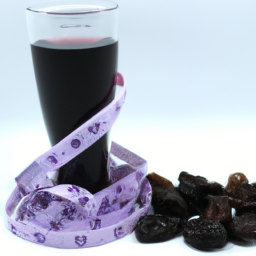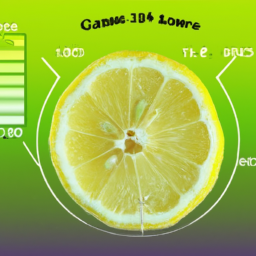Crafting your own e-liquid is like being a mad scientist in your own laboratory. With just a few key ingredients and some basic knowledge, you can create unique blends that cater perfectly to your taste buds. It’s a fun and rewarding hobby for those looking to save money, experiment with new flavors, or have more control over their vaping experience.
But before we dive into the nitty-gritty of making e juice, let me paint you a picture. Imagine being able to customize every aspect of your vaping experience, from the flavor and nicotine strength to the VG/PG ratio and throat hit. No more settling for whatever pre-made e juice happens to be on the shelf.
With a little bit of creativity and some basic DIY skills, you can create the perfect blend that hits all the right notes for you. So if you’re ready to become a vaping mastermind, let’s get started on making your own e juice.
Key Takeaways
- Making DIY e-juice involves key ingredients and techniques such as steeping, choosing the right flavor profile, using flavor concentrates, and balancing ratios of PG and VG.
- Proper safety and handling of ingredients, as well as precise measuring and mixing, are crucial for successful DIY e-juice.
- Testing and adjusting e-juice for flavor, nicotine strength, and consistency is important, as well as troubleshooting common issues like burnt taste.
- Safety considerations include careful handling of nicotine, proper storage of e-juice, and checking expiration dates for quality control.
Understanding the Basics of E-Juice
If you’re new to making e juice, it’s essential to understand the basics so you can create the perfect blend for your taste buds!
The first step is to understand how flavor extraction works. Many e-juice makers use a process called steeping, which involves letting the e-juice sit for a period of time to allow the flavors to blend together.
There are a few different steeping techniques, including warm water baths, ultrasonic cleaners, and just letting the juice sit in a cool, dark place for a week or two.
Another important factor in creating your own e juice is choosing the right flavor profile. This is where you can really get creative and cater to your own personal tastes.
Some people prefer fruity flavors, while others like more savory or dessert-inspired blends. Once you’ve chosen your flavor profile, you can start experimenting with different flavor combinations and ratios to find the perfect balance.
Remember, making your own e juice is all about trial and error, so don’t be afraid to try new things and tweak your recipes until you find the perfect blend.
Choosing Your Flavor Profile
When I’m choosing my flavor profile for e-juice, I consider whether I want a single flavor or a combination of flavors. Mixing multiple flavors can be challenging, but can lead to unique and complex tastes.
To find inspiration, I often look to popular food and beverage flavors, or even try to recreate my favorite desserts. Understanding the potency and characteristics of flavor concentrates is also essential in developing a successful and enjoyable e-juice recipe.
Single Flavor vs. Flavor Combinations
Additionally, it’s worth noting that nearly 90% of DIY e-juice makers prefer to use flavor combinations rather than just a single flavor. While single flavors may seem easier to work with, there are pros and cons to using flavor pairings.
Here are some emotions that may be evoked when considering the use of flavor combinations:
- Excitement: There are endless possibilities when it comes to combining flavors, allowing for unique and complex blends that can’t be achieved with a single flavor.
- Frustration: It can be difficult to find the right balance between flavors, as too much of one flavor can overpower the others and ruin the blend.
- Satisfaction: When a successful flavor combination is achieved, it can be extremely satisfying and rewarding.
- Experimentation: Trying out new flavor combinations can be a fun and exciting process, as it allows for creativity and exploration.
- Nostalgia: Combining flavors that remind you of childhood treats or favorite desserts can bring back fond memories and add a personal touch to your e-juice.
When choosing to use flavor combinations, it’s important to consider the flavor pairings and how they will work together. Some flavors complement each other well, while others may clash and create an unpleasant taste. It’s recommended to start with simple pairings and gradually work towards more complex blends.
With the right combination of flavors, your e-juice can be a unique and delicious creation.
In finding inspiration for your e-juice, it’s important to consider not only the flavors you enjoy, but also the flavors that work well together. Experimenting with different flavor combinations can lead to exciting and unexpected results, and can help you create a flavor profile that’s truly your own.
Finding Inspiration for Your E-Juice
Explore different flavor combinations to create a unique and personalized e-juice that will excite your taste buds. One way to find inspiration for your e-juice is to start with a single flavor and experiment with different ratios.
For instance, if you love the taste of strawberry, you can mix it with other fruit flavors like blueberry or raspberry to create a unique blend. You can also try adding a touch of menthol or cream to enhance the flavor profile.
Another way to find unique flavors is by incorporating seasonal ingredients. For example, during the fall season, you can mix pumpkin spice with caramel to create a delicious pumpkin pie e-juice. During the summer, you can mix watermelon and lime for a refreshing and tangy flavor.
By experimenting with different flavors and ingredients, you can create an e-juice that is truly your own.
Understanding flavor concentrates is essential to creating a successful e-juice.
Understanding Flavor Concentrates
To truly perfect my personalized e-juice, I needed to understand flavor concentrates and their application in my blends. These concentrates are highly concentrated flavorings that are mixed with a base liquid to create e-juice.
Understanding the mixing ratios is crucial to the overall taste of your e-juice. Typically, flavor concentrates should be mixed at a 10-20% ratio with your base liquid. However, this can vary depending on the specific concentrate and your desired flavor intensity.
Flavor intensity is another important factor to consider when working with concentrates. Some concentrates are more potent than others, so it’s important to start with a lower percentage and adjust accordingly. It’s also important to note that some flavors may overpower others, so you may need to adjust the ratio of each concentrate to achieve a balanced flavor profile.
Once you have a good understanding of mixing ratios and flavor intensity, you can move on to gathering your ingredients and creating your personalized e-juice.
Gathering Your Ingredients
When it comes to making my own e juice, the first step is gathering all the necessary ingredients. The key ingredients include base liquids, flavor concentrates, and nicotine. It’s important to have a good mixing calculator to ensure accuracy in the final product.
In this discussion, I’ll go into detail about each ingredient and how to properly gather and measure them for a successful e juice recipe.
Base Liquids
Mixing your own e juice can be a fun and exciting process, and the first step is choosing your base liquids. These base liquids are usually a combination of propylene glycol (PG) and vegetable glycerin (VG).
PG is a thin, clear liquid that carries flavor well and provides a throat hit, while VG is a thicker, sweeter liquid that produces large clouds of vapor. Mixing ratios of PG and VG can vary depending on personal preference, but most DIY e juice makers use a 50/50 or 70/30 ratio of PG to VG.
When choosing your base liquids, it’s important to take ingredient safety into consideration. Make sure to buy high-quality PG and VG that are specifically made for e juice. Don’t use any other types of glycols or glycerins, as they may contain harmful impurities. Additionally, be sure to handle these ingredients with care, as they can cause skin irritation if they come into prolonged contact with your skin.
With the right base liquids and mixing ratios, you’ll be well on your way to creating your own delicious e juice.
Moving on to the next section about flavor concentrates, it’s important to choose flavors that are safe for vaping.
Flavor Concentrates
Flavor concentrates are like the spices of e-liquid, adding unique and delicious notes to your homemade vape juice. Mixing techniques play a crucial role in achieving the desired flavor profile. It’s important to note that flavor concentrates are highly concentrated and should be used sparingly. Here are some tips to help you make the most out of your flavor concentrates:
-
Start with a small amount: Begin by adding a small percentage of flavor concentrate to your base liquid and gradually increase the amount until you reach the desired flavor intensity.
-
Flavor balancing: Some flavors may be overpowering, so it’s essential to balance them out by adding complementary or contrasting flavors. For instance, citrus flavors can be balanced by adding sweet or creamy flavors.
-
Steeping: Allowing your e-liquid to steep for a few days can help the flavors blend together and develop a richer taste. It’s recommended to shake the e-liquid bottle daily during the steeping process.
-
Quality over quantity: Investing in high-quality flavor concentrates can make a significant difference in the overall taste of your e-liquid.
Moving on to the next stage, incorporating nicotine into your e-liquid requires careful measurement and handling.
Nicotine
If you’re looking to add nicotine to your DIY vape concoction, it’s important to handle and measure it with care to ensure a safe and satisfying vaping experience.
First and foremost, you need to determine the nicotine strength that you want to use. Nicotine strength is measured in milligrams per milliliter (mg/mL). The most common strengths are 3mg/mL, 6mg/mL, 12mg/mL, and 18mg/mL, but you can find strengths that range from 0mg/mL to 36mg/mL.
Once you’ve determined the nicotine strength, it’s important to use safety precautions when handling it. Nicotine is a highly toxic substance and can be dangerous if it comes in contact with your skin, eyes, or is ingested. Wear gloves and eye protection when handling nicotine, and be sure to store it in a safe place away from children and pets.
With proper care and handling, adding nicotine to your DIY e-juice can be a safe and enjoyable experience.
In the next section, we’ll discuss how to use a mixing calculator to get accurate measurements for your nicotine and other ingredients.
Mixing Calculator
Using a mixing calculator can be a helpful tool to ensure precise measurements for your DIY vaping creations. These calculators allow you to input the amount of e-liquid you want to make, the desired nicotine level, and the flavor ratios you want to achieve.
Once you have entered this information, the calculator will tell you exactly how much of each ingredient you will need to create your perfect e-juice. One of the main advantages of using a mixing calculator is the ability to adjust nicotine levels to your liking.
For example, if you want a lower nicotine level in your e-juice, you can input that desired level into the calculator and it will adjust the amount of nicotine needed accordingly. Similarly, you can adjust the flavor ratios to achieve the perfect taste for your e-juice.
By using a mixing calculator, you can ensure that your DIY vaping creations are consistent and of the highest quality. When preparing your workspace, it’s important to take the necessary precautions to ensure a safe and clean environment for making e-juice.
Preparing Your Workspace
Before you begin, make sure your workspace is as clean as a surgical room and everything is within reach. Creating a clean workspace is essential to prevent any contamination that may affect the quality of your e-juice. Here are some tips on organizing your equipment:
-
Use a dedicated workspace: Choose a spot that’s reserved solely for mixing your e-juice. Avoid mixing in areas where food’s prepared or where there’s a lot of foot traffic.
-
Disinfect the workspace: Wipe down the surface with a disinfectant to eliminate any bacteria or germs that may be present.
-
Keep your equipment organized: Arrange your equipment in an orderly manner to avoid any confusion or misplaced items.
-
Wear gloves: Use gloves to prevent any contaminants from getting on your hands and ultimately into your e-juice.
Once your workspace is clean and organized, you can move on to the next step: mixing your e-juice. It’s important to be precise when measuring out your ingredients and following the recipe to ensure the best possible outcome.
Mixing Your E-Juice
Now that I’ve set up my workspace, it’s time to start mixing my e-juice. There are several techniques for mixing e-juice, but the most common is to use a scale to measure out the ingredients by weight. This ensures accuracy and consistency in your final product.
It’s also important to use clean equipment and work in a space free from distractions. When mixing your e-juice, it’s important to follow a recipe or create one of your own. Start by adding your base ingredients, such as propylene glycol and vegetable glycerin, to your mixing container. Then add your flavorings and nicotine, if desired.
Mix these ingredients thoroughly, using a spoon or a magnetic stir bar. Some mixers also use ultrasonic cleaners or hot water baths to help the ingredients mix together more effectively. Once your e-juice is mixed, it needs to steep for a period of time to allow the flavors to meld together.
There are several steeping methods, including leaving the e-juice in a cool, dark place for a week or more, or using a hot water bath to speed up the process. As you can see, mixing e-juice is a precise process that requires attention to detail and patience.
Now that my e-juice is mixed and steeped, the next step is to store it properly to ensure it stays fresh and flavorful.
Storing Your E-Juice
When it comes to storing your e-juice, there are a few key points to consider. First, it’s important to choose the right storage container, as certain materials can interact with the e-juice and affect its flavor or potency.
Secondly, proper storage techniques can help extend the shelf life of your e-juice and ensure it stays fresh for as long as possible.
Lastly, it’s important to pay attention to expiration dates and dispose of any expired e-juice to avoid potential health risks or decreased quality.
Choosing the Right Storage Container
Opting for the appropriate storage container is crucial in preserving the quality and flavor of your homemade e-juice. When it comes to choosing between glass and plastic containers, glass is the better option. Glass containers don’t interact with the e-juice, preventing any unwanted chemical reactions that may alter the flavor or potency of the mixture.
On the other hand, plastic containers can be porous and may absorb some of the flavorings or nicotine in the e-juice, leading to a less potent mixture over time. In addition to choosing the right material, it’s also important to consider whether the container is airtight or breathable.
Airtight containers prevent air from entering and potentially oxidizing the e-juice, which can cause it to lose flavor and potency. However, if the container is not breathable, it can also trap excess moisture, leading to mold growth.
Thus, it’s important to choose a container that strikes a balance between being airtight and breathable. With the right storage container, you can ensure your e-juice is well-protected and retains its quality over time.
In the next section, I’ll discuss how to store your e-juice properly to further preserve its flavor and potency.
Storing Your E-Juice Properly
To ensure your precious e-juice mixture stays fresh and delicious, proper storage techniques should be followed. First and foremost, it’s important to keep your e-juice away from heat, light, and air. Direct sunlight and high temperatures can cause the flavors to break down and oxidize, resulting in a less enjoyable vaping experience.
You should also avoid storing your e-juice in plastic containers, as the chemicals in plastic can leach into the juice and cause contamination. Instead, it’s recommended to store your e-juice in glass or stainless steel containers with airtight seals. This will help keep the juice fresh and prevent any contamination from outside sources.
It’s also a good idea to label your containers with the flavor and date it was made, so you can keep track of how long it’s been stored. By following these proper storage techniques, you can ensure that your e-juice will stay fresh and delicious for as long as possible.
As we’ve discussed proper storage techniques to keep your e-juice fresh, it’s important to also consider the shelf life and expiration dates of your mixture. While e-juice can technically last for years if stored properly, it’s recommended to use it within a year of purchase or creation. This is because the nicotine content can begin to degrade over time, resulting in a less satisfying vaping experience.
By paying attention to the expiration dates, you can ensure that you’re getting the most out of your e-juice and enjoying it to its fullest potential.
Shelf Life and Expiration Dates
Properly storing your e-juice in glass or stainless steel containers with airtight seals helps ensure its freshness, but it’s important to also consider the shelf life and expiration dates to fully enjoy your vaping experience. Here are some points to keep in mind regarding the shelf life and expiration dates of your e-juice:
-
Heat and light can significantly reduce the shelf life of your e-juice. Exposure to heat and sunlight can cause the flavor and nicotine content to degrade rapidly, making it taste unpleasant and less effective over time.
-
Always check the expiration date on your bottle of e-juice before using it. E-juice that has expired can also taste bad and may not be as effective as fresh e-juice.
-
Proper labeling of your e-juice bottles is important to ensure that you know when your e-juice was made and when it expires. This will help you keep track of your e-juice and avoid using expired or stale e-juice.
-
If you notice any changes in the flavor or consistency of your e-juice, it may be time to replace it. Using expired or stale e-juice can result in a less enjoyable vaping experience.
Taking care to properly store and label your e-juice can help ensure that you get the most out of your vaping experience. However, it’s also important to periodically test your e-juice to ensure that it still tastes and functions as expected.
Testing Your E-Juice
Once you’ve mixed your e-juice, it’s important to test it to ensure that it’s safe and enjoyable to vape. Quality control is essential when making your own e-juice, and this involves testing the flavor, nicotine strength, and overall consistency of your blend.
The first step is to perform a flavor test by sampling your e-juice with a clean atomizer. Take note of any off-flavors or harshness in the vapor, which can indicate issues with your recipe or mixing process.
Next, it’s important to test the nicotine strength of your e-juice. This can be done using a nicotine testing kit, which measures the concentration of nicotine in your blend. Additionally, you should check the consistency of your e-juice by examining its viscosity and color. If your e-juice is too thick or thin, you may need to adjust the ratio of PG and VG.
With these quality control measures in place, you can be confident that your e-juice is safe and enjoyable to vape. Now, let’s move on to troubleshooting common issues that can arise when making e-juice.
Troubleshooting Common Issues
If you’re experiencing issues with your homemade e-juice, don’t worry – troubleshooting common problems is easy.
One common e juice problem is over-flavoring, which can result in a harsh or unpleasant taste. To fix this issue, you can try diluting your e-juice with additional VG or PG, or reducing the amount of flavoring used.
Another issue is under-flavoring, which can result in a weak or tasteless e-juice. To fix this, you can try increasing the amount of flavoring used, or steeping your e-juice for a longer period of time.
Another common issue is a burnt taste, which can be caused by a few different factors. One cause could be a dry wick, which can be fixed by adding more e-juice to your tank or atomizer. Another cause could be too high of a wattage or voltage, which can be fixed by lowering the power output. Additionally, if you’re using a coil that has been used for a long time, it may need to be replaced.
These troubleshooting tips can help you address common issues with your homemade e-juice, ensuring that you can enjoy a great vaping experience. By following these tips and tricks for making great e-juice, you can take your vaping experience to the next level.
Tips and Tricks for Making Great E-Juice
When it comes to making great e-juice, I’ve found that experimenting with flavor combinations can make all the difference. By mixing and matching different flavors, I’ve been able to create unique and delicious blends that stand out from the rest.
Additionally, using sweeteners and enhancers can help bring out the full potential of certain flavors, while adding menthol or cooling agents can provide a refreshing and satisfying finish to any vape.
Experimenting with Flavor Combinations
Exploring different flavor combinations is the key to creating a unique and personalized e juice that satisfies your taste buds. It’s important to understand flavor balancing and how different flavor profiles can complement or clash with one another.
Start by experimenting with unexpected pairings, such as mixing fruit and dessert flavors or adding a touch of spice to your blends. Keep in mind that some flavors are stronger than others, so it’s important to use them in moderation to avoid overpowering the other ingredients.
When experimenting with flavor combinations, it’s important to take notes and keep track of your measurements. This will help you to recreate your favorite blends and make adjustments as needed. Don’t be afraid to try new things and think outside the box.
With a little creativity and experimentation, you can create a truly unique and satisfying e juice that reflects your personal taste preferences.
As you continue to perfect your flavor combinations, consider incorporating sweeteners and enhancers to add depth and complexity to your blends. These ingredients can help to balance out the flavors and make them more enjoyable to vape. But before adding any sweeteners or enhancers, it’s important to understand how they can affect the overall taste and quality of your e juice.
Using Sweeteners and Enhancers
Adding sweeteners and enhancers can significantly improve the taste of your DIY e-liquid. However, it’s crucial to understand that these additives can also alter the overall quality of your juice.
Sweetener alternatives such as stevia or monk fruit extract are popular choices because they offer a natural sweetness without adding calories or affecting blood sugar levels. On the other hand, artificial sweeteners like sucralose or aspartame can impart a chemical taste and may require more steeping time to blend with the other flavors.
When it comes to enhancer flavor combinations, the possibilities are endless. Some examples of enhancers include vanillin, which adds a creamy vanilla flavor, or ethyl maltol, which can provide a cotton candy-like sweetness. However, it’s important to use enhancers sparingly since they can easily overpower the other flavors in your mix.
Remember to experiment with different combinations and ratios to find the perfect balance for your palette.
As you move on to adding menthol or cooling agents, keep in mind that these additives can also affect the overall taste and quality of your e-liquid.
Adding Menthol or Cooling Agents
Enhancing the flavor of your DIY e-liquid with a refreshing kick is easy by adding menthol or cooling agents. If you’re not a fan of menthol, there are plenty of alternatives to choose from, such as Koolada and WS-23. These cooling agents provide a similar sensation to menthol, without the minty taste.
You can adjust the intensity of the menthol or cooling agent by experimenting with different concentrations. Start with a small amount and gradually increase until you achieve the desired level of coolness.
When adding menthol or a cooling agent to your e-juice, it’s important to note that it can mute other flavors. To avoid this, try adding a small amount of menthol or cooling agent to your base e-liquid first, and then adjust accordingly.
It’s also important to note that menthol or cooling agents can increase the throat hit of your e-liquid. If you prefer a smoother vape, try reducing the amount of nicotine or PG in your e-liquid. With a little experimentation, you can create a refreshing and satisfying e-liquid that’s perfect for summertime vaping.
Frequently Asked Questions
Can you use artificial sweeteners in e-juice?
Yes, artificial sweeteners can be used in e-juice, but there are pros and cons to consider. Pros include enhanced flavor and sweetness without calories, while cons include potential health concerns regarding artificial sweeteners such as aspartame and sucralose.
Is it necessary to steep e-juice before vaping?
Steeping e-juice allows the flavors to blend and mature, resulting in a smoother and more flavorful vaping experience. Methods include heat, time, or a combination of both. Skipping steeping can result in a harsh taste.
Can you make e-juice without nicotine?
Yes, it is possible to make e-juice without nicotine. There are many No Nicotine Recipes available online that use flavoring options such as fruit, candy, and dessert flavors to create a satisfying vaping experience.
How do you adjust the PG/VG ratio in e-juice?
Adjusting the viscosity of e-juice is key to achieving the perfect blend. By tweaking the ratio of PG to VG, I can customize the flavor and throat hit to my liking. It’s a delicate balance, but worth the effort for a truly personalized vaping experience.
What is the shelf-life of homemade e-juice?
The shelf-life of homemade e-juice can be extended by storing it in a cool, dark place away from direct sunlight. Preventing e-juice oxidation is also crucial by using air-tight containers and avoiding excessive exposure to air.
Conclusion
In conclusion, making your own e-juice can be a fun and rewarding experience. It allows you to customize your vaping experience and save money at the same time. However, it’s important to understand the basics of e-juice and have the right ingredients and tools before starting.
Remember to choose your flavor profile wisely and gather all necessary ingredients before preparing your workspace. Mixing the e-juice requires patience and attention to detail, but with practice, you can create a great-tasting product.
Storing and testing your e-juice is crucial to ensure its quality and safety. And if you encounter any issues, don’t worry – there are troubleshooting tips available.
Overall, making e-juice is a great way to personalize your vaping experience. With the right knowledge and ingredients, you can create a unique and enjoyable product that’s tailored to your tastes. So, get your ingredients ready, prepare your workspace, and start mixing – the possibilities are endless!
Ilana has been a vegan for over 10 years. She originally made the switch for health reasons, but soon found herself becoming more and more passionate about the ethical and environmental implications of a vegan lifestyle. Ilana is the author of The Graceful Kitchen, a blog all about veganism. She loves to cook up delicious and nutritious vegan meals, and share her recipes with others who are interested in leading a cruelty-free life. Ilana is also a strong advocate for using whole foods as the foundation of a healthy diet, and believes that going vegan is one of the best ways to achieve this.
